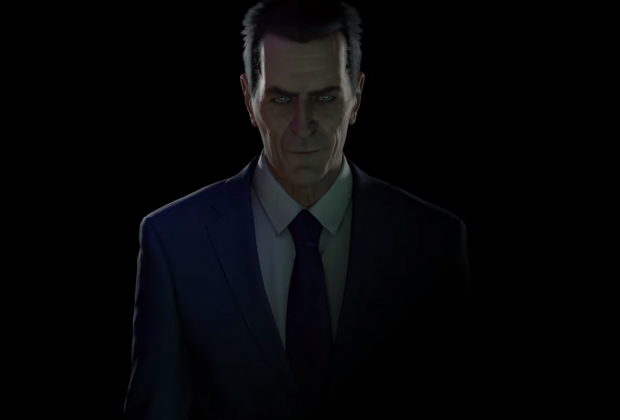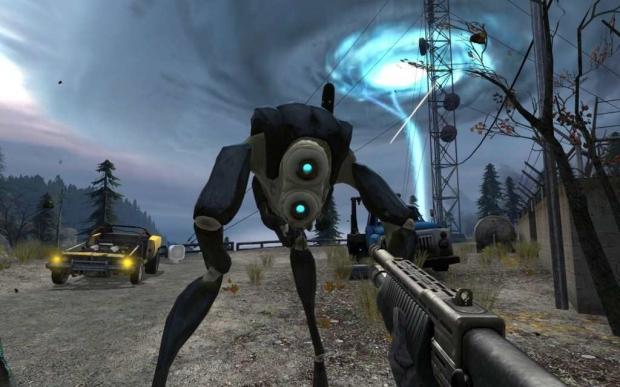Why hasn't Valve released Half-Life 2: Episode 3 yet? Why did it take 12 years for a new Half-Life game? The secretive company gives two answers: One, Half-Life games are meant to illustrate tech advancements, and two, the planned episodes basically turned into sequels.

Half-Life: Alyx just released today. It's the first new Half-Life game in the last 12 years, and it's a VR-exclusive game. Although Valve says Alyx is just the beginning and more Half-Life games are on the way, it could still be a while before Half-Life 3 happens. Before we jump the gun and talk about Half-Life's future, let's talk about its somewhat troubled past.
In a recent interview with IGN, Valve today revealed a ton of info about its game development practices. Valve talked about Half-Life 2: Episode 3, about why there hasn't been a new Half-Life game for so long, and what we can expect from future games. That first part, though, is the most interesting, and it shows Valve's billion-dollar Steam platform doesn't make it immune to the issues that plague game developers everywhere.
In short, Half-Life 2: Episode 3 never happened because the team got overwhelmed. Valve was simply trying to do too much too fast.
As a surprising number of game devs also do, Valve was developing the Source 2 engine in tandem with Half-Life 2 and its accompanying episodes. Valve was loosely planning the episodes as it was developing the main game, and it was making the main game as it was developing the engine. There were lots of plates spinning at once.
This was okay for a while and Valve could handle it, but it did take a long time to develop. Valve spent six years working on the Source 2 Engine and Half-Life 2 at the same time.
Once both Source 2 and Half-Life 2 were ready, Valve shipped the game in 2004. Then it immediately swung over to Episode 1, which released two years later in 2006. Episode 2 was released much more quickly just a year later in 2007 as Valve got into the full swing of iteration and knew the ins-and-outs of its brand new games engine.
"After working on Half-Life 2 for six years we decided we didn't want to go dark for so long. That's why we started doing the episodes where we thought, 'well, we have the stable technology now. We understand the characters, we understand the story, we have most of the mechanics. Let's just bite off little chunks and then release more often. We think players are going to prefer that from waiting six years and going through however many delays we went through,'" level designer Dario Casali told IGN. Casali has been at Valve since 1996 and worked on the original Half-Life.
(Continued below)
But Valve learned just how tough it was to make a new games engine and a new game from scratch. The idea was simple: Valve wanted to make the engine, and use Half-Life as a spectacle that showed what the engine could do. So they thought the only way to do that was to make both at the same time. It was a lesson they'd heed for future games.
Valve didn't want to make a new engine and a new Half-Life game at the same time ever again.
"We didn't want to make that same Half-Life 2 mistake again, the mistake of working on Source 2 and the next Half-Life game at the same time, because that created a lot of pain the first time we tried to do that."
Things slowed down tremendously for Half-Life 2: Episode 3. After shipping Episode 2, Valve wanted to push the bill even more than it did with Half-Life 2 and wanted Episode 3 to be special. But Source 2 may not have hit that mark--Valve was eyeing something new, something more ambitious.
There was also a big issue with "scope creep," a phenomenon that plagues all game developers. Scope creep is essentially when a game continues to grow and grow and "creep" farther away from its original vision or goal. We've seen this manifest negatively in BioWare games like Anthem and Mass Effect: Andromeda, which are very different than the original ideas developers had planned.

Half-Life 2: Episode 3 simply grew and grew and soon became so daunting and unwieldy that Valve couldn't really control it. In a very real sense, Episode 3 was more of a sequel rather than an episode.
"We found ourselves creeping ever forward towards, 'Well, let's just keeping putting more and more, and more, and more stuff in this game because we want to make it as good as we can.' And then we realized these episodes are turning more into sequels," Casali said.
"I think at that point we realized, 'Okay, maybe this episodes thing, it was a good concept, but we're not executing terribly well as far as getting things out quickly enough.'"
Valve continued to test out new Half-Life projects with its internal playtesting groups, but none of these games really popped off. Meanwhile, Valve built other games using Source 2 including Counter-Strike: GO and DOTA 2, both of which are still wildly popular today.
Episode 3 just kind of stagnated on the back burner, especially after Valve learned how hard it was to make a Half-Life game alongside a new engine. And that's ultimately why Half-Life: Alyx uses Source 2 as well.
(Continued below)
Read Also: Half-Life: Alyx is basically practice for more Half-Life games
Half-Life: Alyx - The bridge to Half-Life 3
Half-Life: Alyx is a bridge between Half-Life 2's legacy and the future of the franchise.
The game was built for two reasons: To satisfy Valve's penchant for using Half-Life as a kind of technical showcase of what new technology can do--in this case, its new Valve Index/Steam VR platform in conjunction with Source 2--and to give devs an opportunity to "ease back in" to the franchise.
According to Game Newell, all Half-Life games are designed to push the bill for the current generation's gaming tech. Half-Life games aren't meant to be sequelized affairs--they should be special.
"Half-Life games are supposed to solve interesting problems. [We don't want to] crank Half-Life titles out because it helps us make the quarterly numbers," Newell said in the IGN Interview.
Half-Life: Alyx really is a spectacle for VR, though.
It's VR's first real killer game, and it has a new dimension of interactivity that hasn't really been seen in any VR game to date. It was built from the ground up for VR, using a highly optimized VR-friendly Source 2 in tandem with Valve's own proprietary VR hardware and platform infrastructure.
Now that the Half-Life team is in the full swing of things and acclimated back into making Half-Life games, we could see more titles roll out sooner. And by sooner, I mean one every 2 years or so. It all depends on their plans. We could see new Half-Life: Alyx chapters or spinoffs in VR, or Episode 3 finally come to fruition built with Source 2. It all depends on the iteration process and how much Valve is willing to do.
And of course it all depends on what kind of technological innovations Valve can harness. VR seems to be the big new thing at Valve in terms of hardware, so I'd expect at least another Half-Life game on the platform. Maybe this one will also release on traditional PCs.
So where does that leave us with Half-Life 3?
It all depends on what Valve is doing engine-wise, but that mystical sequel is probably a ways away. If Valve starts developing Source 3, then we shouldn't expect Half Life 3 until after Source 3 is ready.
Read Also: Half-Life 3 is still possible, Valve says other Half-Life games coming


